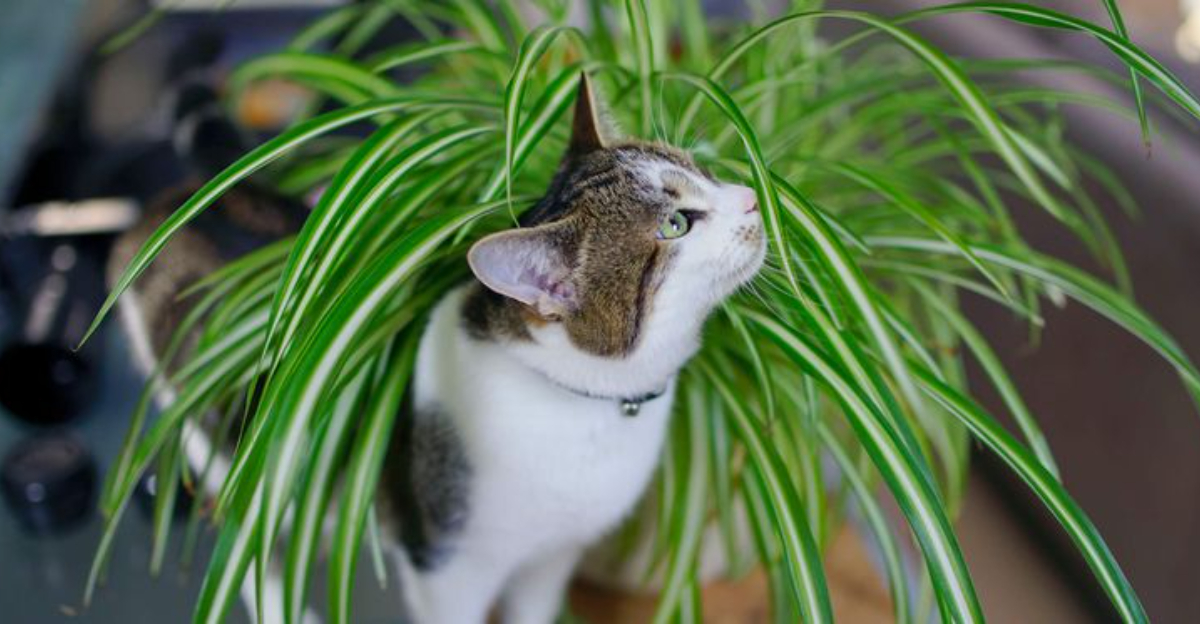Cats are naturally curious creatures, and houseplants often become their playground or snack bar. This not only endangers your beloved plants but can also be harmful to your feline friends.
In this guide, we will explore 14 effective ways to keep your cats away from your houseplants. From natural repellents to creative distractions, these tips will help you maintain a peaceful coexistence between your cats and plants.
1. Use Citrus Peels

Cats generally dislike the smell of citrus, making it an excellent natural deterrent. Placing citrus peels around your plants can help keep your feline friends away.
To begin, save your orange, lemon, or lime peels instead of discarding them. Arrange them strategically around the base of your houseplants. This method not only deters cats but also adds a refreshing fragrance to your home.
However, remember to replace the peels weekly to maintain their effectiveness. You can also consider using citrus-scented essential oils diluted in water as a spray around the plants.
This approach is both eco-friendly and cost-effective, ensuring your plants remain safe while your home smells delightful. Experiment with different citrus varieties to find what works best for your cats. Always supervise your pets to ensure they aren’t tempted to chew on the peels.
2. Create A Dedicated Cat Garden
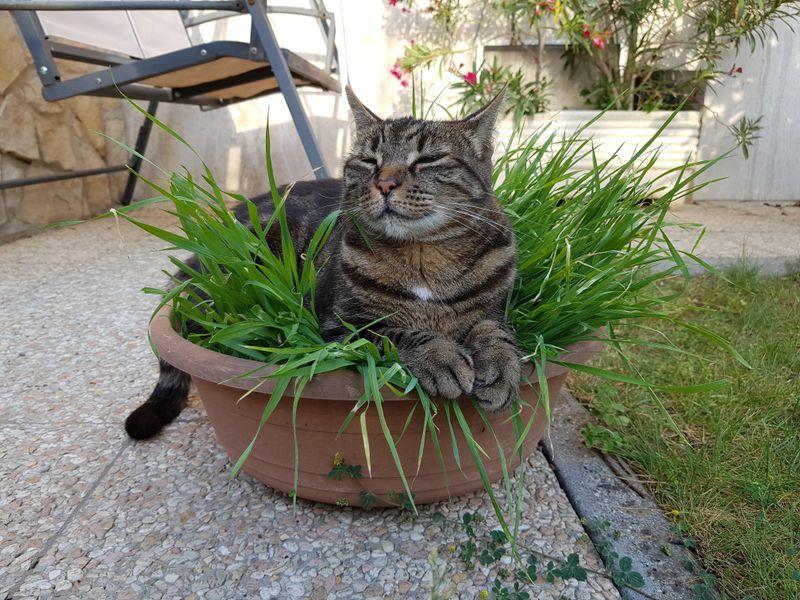
By offering your cats an alternative source of greenery, you can redirect their attention away from your valuable houseplants.
Create a dedicated cat garden with plants that are safe and appealing to them. Consider including catnip, wheatgrass, and valerian in your indoor feline garden.
These plants can provide both entertainment and nutrition for your cats, keeping them occupied and satisfied. Position the cat garden in an accessible area where your cats like to spend time, ensuring it’s more appealing than your common houseplants.
To maintain the garden, regularly water and trim the plants, promoting healthy growth. This setup not only protects your houseplants but also enhances your cats’ environment. Encourage your cats to engage with their garden by placing toys or treats nearby, making it a delightful and enriching experience.
3. Use Double-Sided Tape
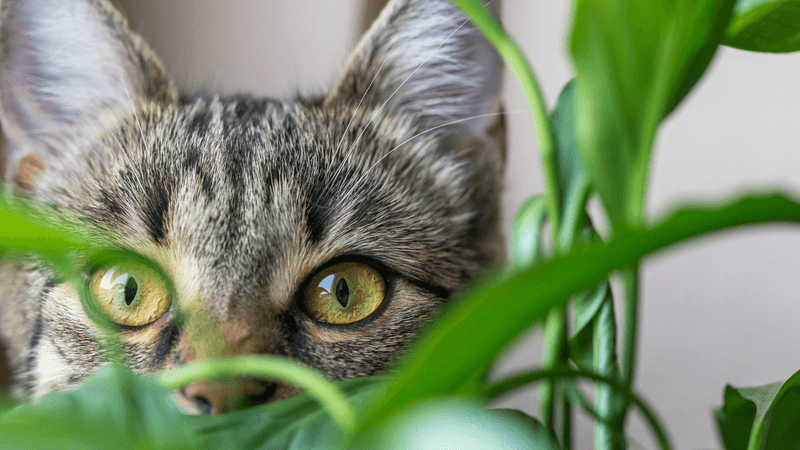
Cats despise sticky textures, and double-sided tape can serve as a practical deterrent. Wrapping the base of your plants with this tape can discourage your cats from getting too close.
Begin by purchasing a pet-safe double-sided tape from your local store. Carefully wrap the tape around the pot or place it on the soil’s surface.
This method creates an unpleasant texture for curious paws, keeping your plants safe. It’s essential to ensure that the tape doesn’t come into direct contact with your plants to avoid damage. Regularly check the tape’s effectiveness and replace it as needed to maintain its deterrent properties.
This solution is simple yet effective, allowing you to protect your plants without resorting to harsh chemicals. Consider pairing this method with other deterrents for reinforced protection.
4. Introduce Motion-Activated Sprays
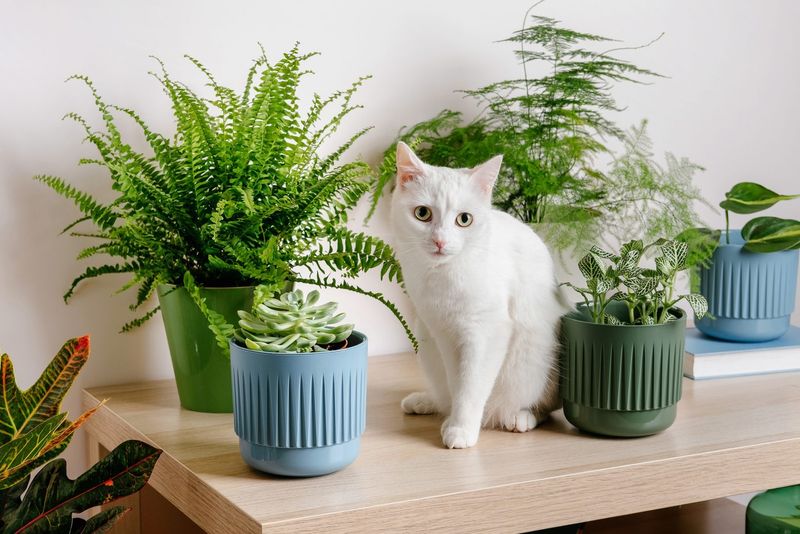
Motion-activated sprays are a high-tech solution to keep cats away from houseplants. These devices release a harmless burst of air or water when they detect motion, startling the cat and deterring them from approaching.
To implement this, purchase a motion-activated spray from a pet store or online. Place the device strategically near your plants where your cats frequently roam.
The unexpected sensation is usually enough to keep them at bay, ensuring your plants remain untouched. Regularly check and refill the device as needed to maintain its functionality.
This method requires minimal effort and provides an effective, non-invasive way to deter your cats. Plus, it can be used in various areas of your home, offering versatile protection. Ensure the spray is pet-safe to avoid any potential harm.
5. Provide Cat Toys And Distractions
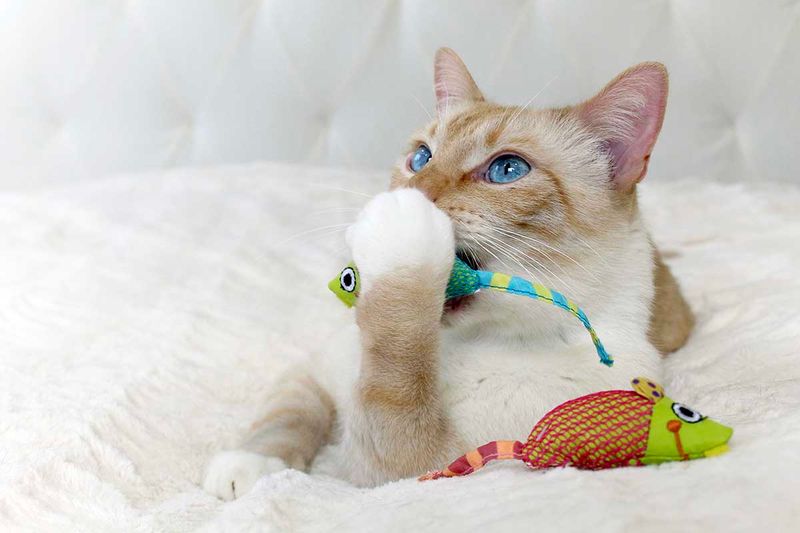
Keeping your cats entertained with toys can divert their attention from houseplants. A variety of toys such as balls, feather wands, and interactive puzzles can capture their interest.
Start by observing your cat’s play preferences and selecting toys accordingly. Rotate the toys regularly to keep the playtime exciting and prevent boredom. You might also consider incorporating toys that mimic natural prey behaviors, stimulating your cat’s instincts.
For added engagement, consider play sessions with your cat using these toys, strengthening your bond and further distracting them from the plants.
This strategy not only keeps your cats entertained but also enriches their environment, reducing the likelihood of them turning to your plants for amusement. Regular playtime is key to maintaining a happy and healthy cat.
6. Place Plants Out Of Reach
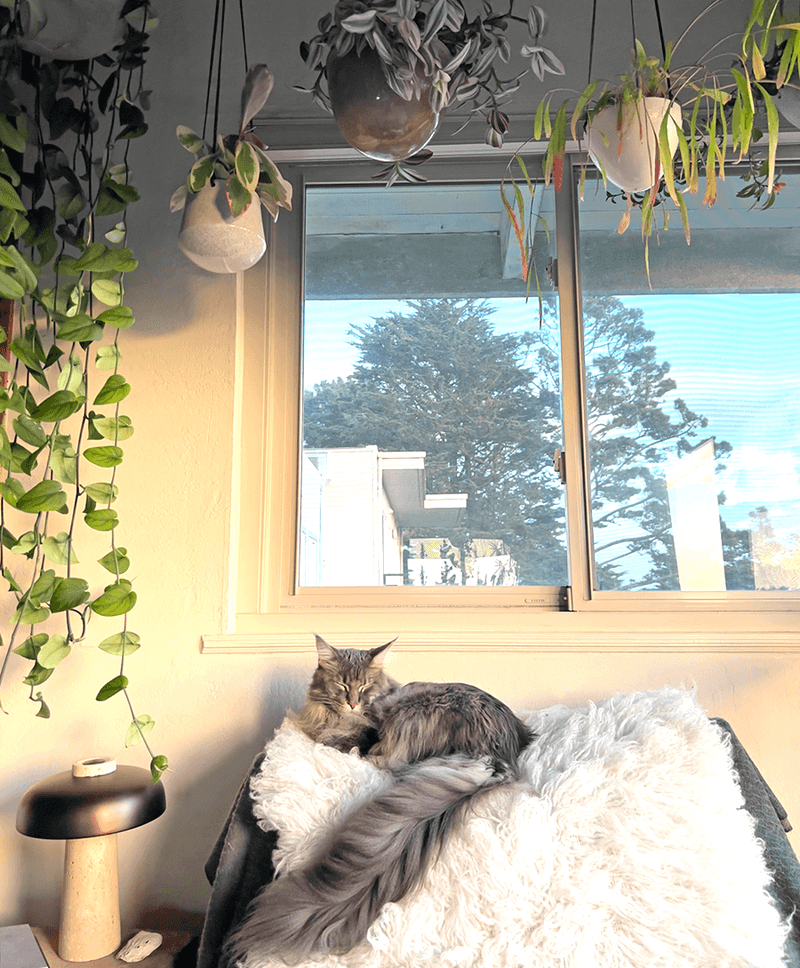
Positioning your houseplants in areas that are inaccessible to your cats is a straightforward solution. Consider using hanging baskets, tall shelves, or plant stands to elevate your greenery.
This not only adds an aesthetic appeal but also keeps the plants safe from mischievous paws. When choosing locations, ensure that the plants still receive adequate sunlight and are easy for you to water and care for.
Observe your cats to determine areas they frequently explore and adjust the placement accordingly. Additionally, using furniture barriers or room dividers can help prevent access to specific areas.
This method combines practicality with creativity, allowing you to showcase your plants without compromising their safety. Regularly assess the placement as your cats may find new ways to reach their desired target.
7. Add Decorative Pebbles To Soil
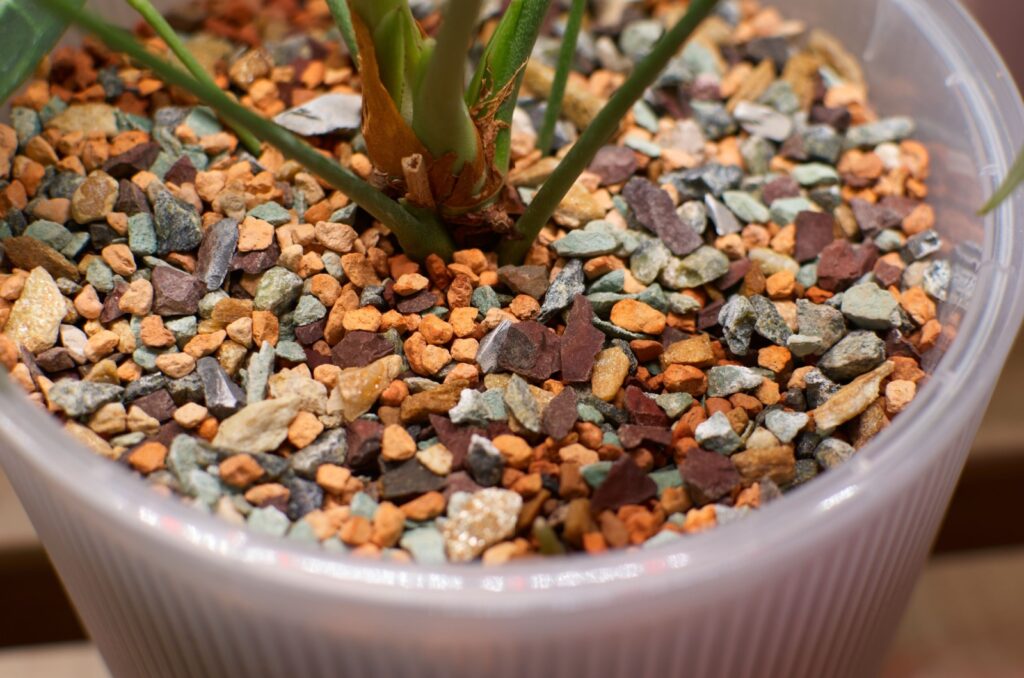
Covering the soil of your houseplants with decorative pebbles can deter cats from digging. This method not only protects your plants but also enhances their visual appeal.
To begin, choose pebbles that complement your decor and are large enough to prevent swallowing. Spread the pebbles evenly over the soil, creating a barrier that discourages pawing and digging. This layer also aids in moisture retention, promoting plant health.
Monitor your cats’ behavior and adjust the pebble coverage if they seem undeterred. Moreover, this technique can be combined with other deterrents for increased effectiveness.
Using pebbles is a simple and elegant way to protect your plants while adding a decorative element to your home. Always ensure the chosen materials are pet-safe to avoid any accidental ingestion.
8. Use Scent-Based Deterrents
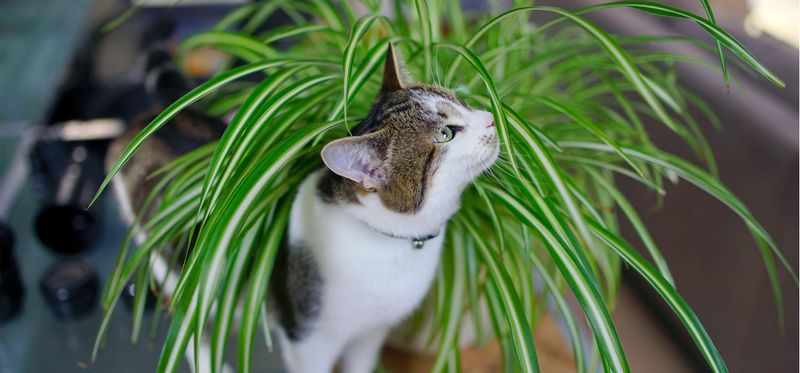
Scent-based deterrents can be an effective way to keep cats away from houseplants. These products, available in pet stores, are designed to emit odors that are unpleasant to cats but neutral to humans.
Begin by selecting a pet-safe deterrent spray and apply it around your plants according to the instructions.
The scent helps create an invisible barrier that cats prefer to avoid, ensuring your plants remain untouched.
Reapply the deterrent as needed to maintain its effectiveness, especially after watering your plants. This method is convenient and quick, providing a hassle-free way to protect your greenery.
It’s especially useful for stubborn cats that tend to ignore physical barriers. Always check the product for pet safety to ensure it doesn’t irritate your feline friend.
9. Cover Pots With Aluminum Foil
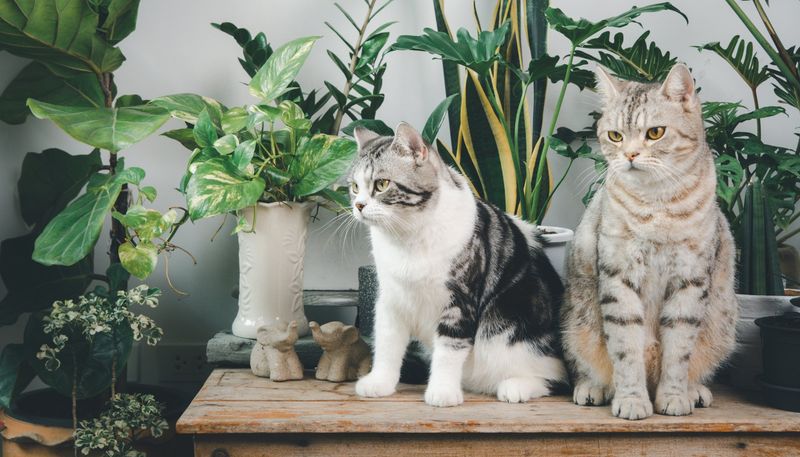
Aluminum foil’s unique texture and sound can deter cats from approaching your plants. Covering the pot or soil with foil creates an unappealing surface for your feline friends. Start by wrapping the foil around the base of the plant, ensuring it covers the soil completely.
The crinkly sound and shiny surface often keep cats at bay, preventing them from digging or chewing on the plant.
Regularly check the foil for wear and replace it as necessary to maintain its deterrent properties. This method is both cost-effective and easy to implement, offering a temporary solution to cat-plant conflicts.
For a more aesthetic approach, consider using colored foil that complements your home decor. Remember to supervise your cats initially to ensure they don’t attempt to chew on or play with the foil.
10. Sprinkle Cayenne Pepper

Cayenne pepper’s strong scent and spicy nature can act as a natural deterrent for cats. Sprinkling a small amount of cayenne pepper around your plants can help keep them safe from curious paws.
Begin by lightly dusting the soil with the pepper, ensuring even coverage. The spicy aroma usually keeps cats at a distance, protecting your plants from unwanted attention.
Be cautious to avoid overusing the pepper, as too much can harm the plant or irritate your cat if ingested. This method is a natural, cost-effective way to safeguard your greenery.
However, it’s crucial to reapply the pepper periodically, particularly after watering. Always observe your cat’s reaction to the pepper to ensure it doesn’t cause any discomfort. Combine this with other deterrents for added protection.
11. Use Vinegar Spray
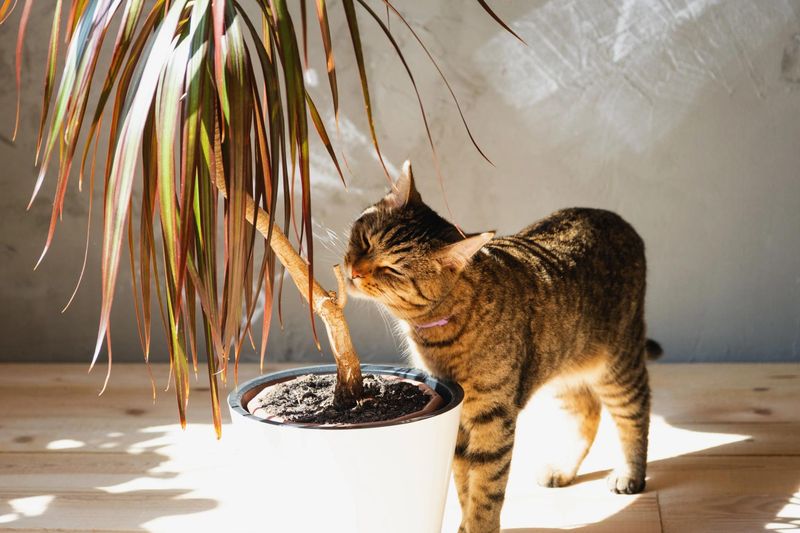
Vinegar’s strong scent makes it an effective natural deterrent for cats. Creating a vinegar spray is simple and can help protect your houseplants.
Mix equal parts of water and white vinegar in a spray bottle. Lightly mist the area around your plants, avoiding direct contact with the foliage to prevent damage. The smell is usually sufficient to keep cats away, providing an invisible barrier to safeguard your plants.
Regularly reapply the spray to maintain its efficacy, especially after watering or cleaning. This method is eco-friendly and easy to implement, offering a practical solution for persistent cats.
Ensure your plants aren’t sensitive to vinegar, and monitor your cat’s behavior to assess the spray’s effectiveness. Combining vinegar spray with other deterrents can provide comprehensive protection for your greenery.
12. Install A Cat Repellent Mat
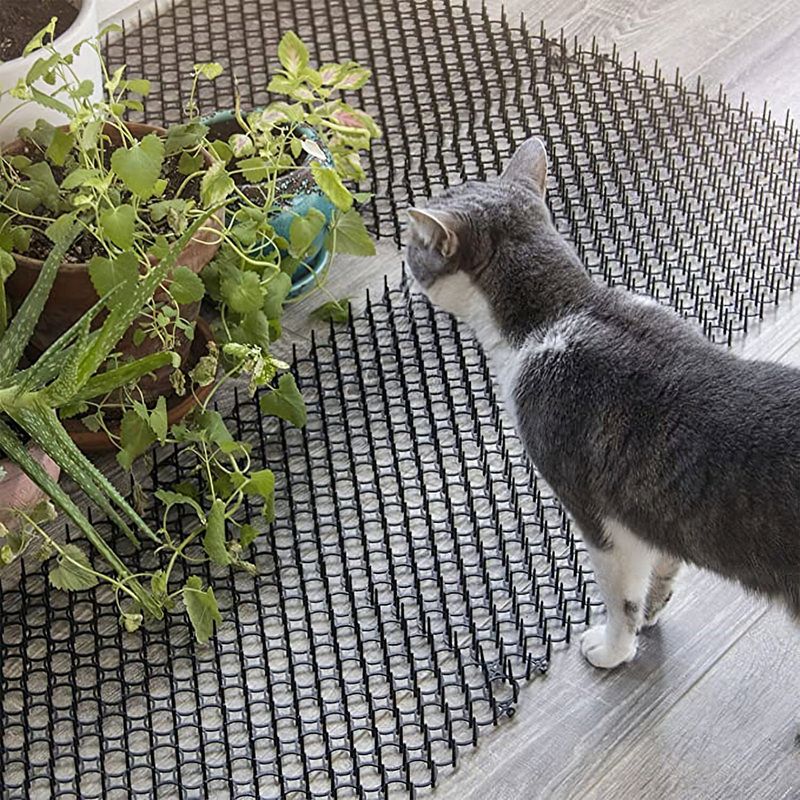
Cat repellent mats provide a tactile deterrent that discourages cats from approaching your plants. These mats are designed with small spikes that are uncomfortable but harmless to cats.
To use, place the mat around the base of your plant or on the surface of the potting soil. The texture serves as a barrier that cats prefer to avoid, keeping them away from your greenery.
Regularly check the placement of the mat and adjust as needed to accommodate your cat’s behavior. This solution is straightforward and effective, offering a non-toxic way to protect your plants.
Ensure the mat is pet-safe and doesn’t pose any risks to your cat. Combining this with other deterrents can enhance its effectiveness, providing a multi-layered approach to plant protection.
13. Introduce A Cat Training Device
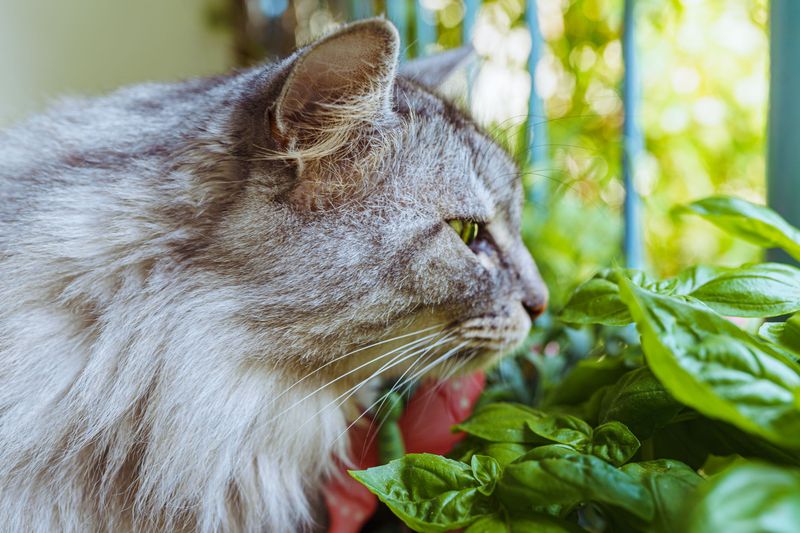
Cat training devices can be an effective way to teach your cat to stay away from houseplants. These devices typically emit sounds or vibrations that are unpleasant to cats but harmless.
To start, purchase a training device suited for indoor use and place it near your plants. When the cat approaches, the device will activate, discouraging them from coming closer.
Over time, your cat will learn to associate the plants with the unpleasant sensation, reducing their attempts to explore them.
Regularly check the device for proper function and replace batteries as needed. This method is a helpful addition to other deterrents, providing a comprehensive approach to keeping your plants safe. Consider using the device in multiple locations if your cat tends to roam throughout your home.
14. Offer Alternative Climbing Options
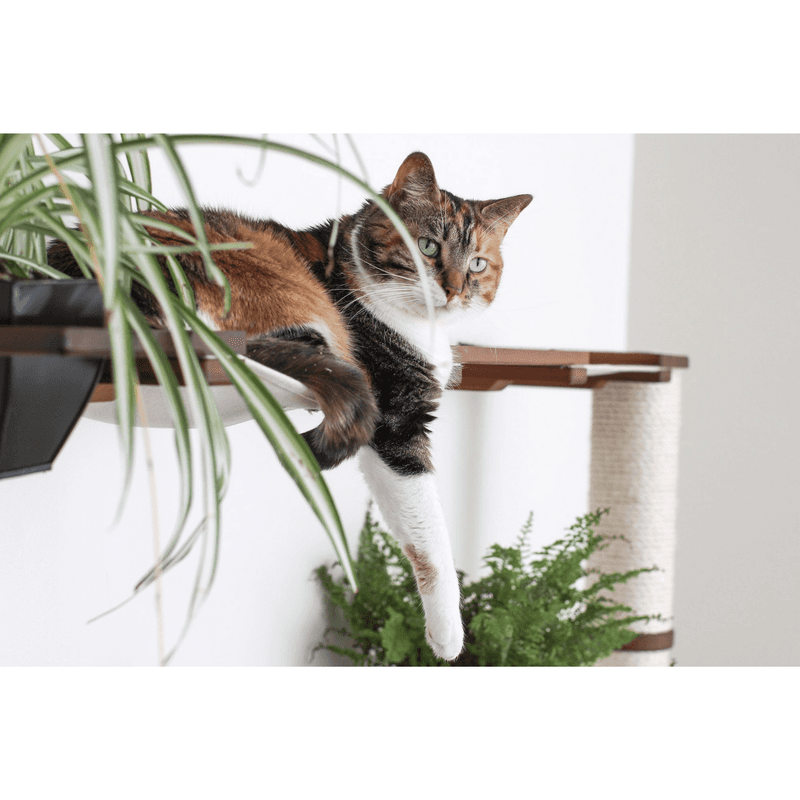
Providing your cat with alternative climbing opportunities can redirect their energy away from your houseplants.
Investing in a tall cat tree or condo can offer your feline friend a safe and satisfying place to climb. Place the cat tree in an area where your cat can enjoy views or sunlight, making it more appealing than your plants. Encourage your cat to use the tree by placing toys or treats on different levels.
Regularly change the placement of these items to maintain their interest. This method not only protects your plants but also enriches your cat’s environment, promoting physical activity and mental stimulation.
A well-placed cat tree can transform your living space into a cat-friendly haven while preserving your greenery. Observe your cat’s preferences and adjust the setup to suit their needs.

